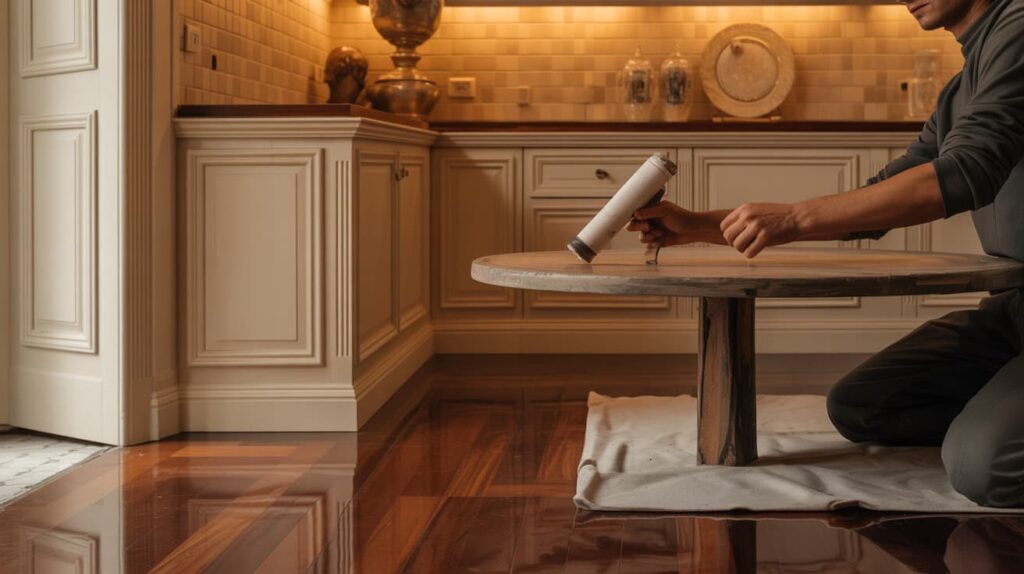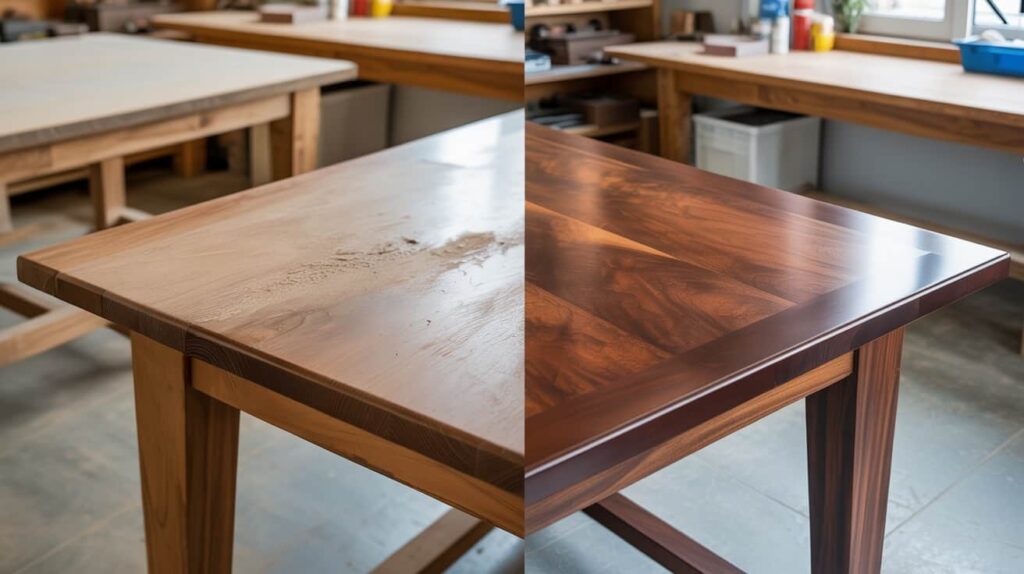Acamento – Transform Anything With One Final Step!
Acamento, inspired by the Portuguese term “acabamento,” translates to the final touch that adds polish and perfection to any creation. Whether it’s in construction, fashion, furniture design, or art, acamento plays a crucial role in transforming something ordinary into something extraordinary.
Stay tuned with us, we will explore what acamento truly means, where it can be seen, how it’s done, and why it’s so important. We’ll also provide insights into how it enhances the longevity, aesthetic appeal, and overall satisfaction of various products and environments.
What Is Acamento?
At its core, acamento refers to the finishing or finalizing process of any object or structure. It’s that crucial moment when all the hard work pays off, and everything comes together seamlessly. Whether it’s the last brushstroke on a painting, the stitching of buttons on a garment, or the installation of the last tiles in a house, acamento is the process that completes the work, making it both functional and beautiful.

In the U.S., people use this term across various sectors, including construction, fashion, furniture design, and art. Acamento can be seen in every corner of life, from the smooth finishes on your kitchen cabinets to the intricate designs on your favorite jacket. It’s all about paying attention to the small details that elevate a creation.
Where Can You Find Acamento?
You might not have known it, but acamento is all around you. From the beautifully painted walls of your home to the smooth finishes on your favorite piece of furniture, acamento is the touch that elevates design and craftsmanship. Here’s a closer look at where you’ll find acamento in your everyday life:
In Buildings and Construction:
Acamento is crucial in construction, turning a basic structure into a functional, visually appealing space. It adds finishing touches like paint, tiles, window treatments, and light fixtures to complete the look.
- Painted Walls & Textured Finishes: A fresh coat of paint or textured finishes transforms a plain wall into a vibrant, lively room.
- Polished Floors & Tiling: Polished floors, whether marble, tile, or hardwood, elevate the space with a sleek, sophisticated finish.
- Shiny Fixtures & Hardware: Small details like door handles, light switches, and faucets provide a polished look, adding sophistication and completeness to the room.
In Fashion and Apparel:
Acamento in fashion is all about the final touches that elevate a simple piece of clothing into something stylish and unique. From sparkly buttons to detailed stitching, acamento brings out the personality in every garment.
- Unique Stitching and Details: Tailors and designers add intricate stitching or embroidery, giving garments their final flair.
- Accessories and Embellishments: Accessories like belts, necklaces, or shoes can transform a basic outfit into something special, adding the finishing touches that make it shine.
In Furniture and Home Decor:
In furniture design, acamento refers to the final details that make pieces both functional and beautiful. From polishing wood to adding soft cushions, these touches enhance comfort and style.
- Smoothing and Polishing Wood: Wooden furniture is polished to enhance its natural beauty, turning rough surfaces into sleek, glossy finishes.
- Decorative Elements: Cushions, fabrics, and patterns are added to furniture to make it inviting and integral to the room’s decor.
In Art and Design:
Acamento is crucial in art, where it’s the final details that make a piece stand out. Whether it’s the last brushstroke on a painting or the shiny glaze on a ceramic sculpture, acamento in art brings everything together.
- Final Layer of Paint or Glaze: In paintings, highlights and glazes add depth and completion.
- Design Elements: In graphic design, fine-tuning colors, textures, and typography perfects the visual.
In Outdoor Spaces and Landscaping:
Acamento extends beyond interiors and fashion—it’s also essential in outdoor spaces and landscaping. The finishing touches in gardens, parks, or yards transform a basic space into a tranquil, beautiful environment.
- Landscaping and Planting: Thoughtful placement of plants, flowers, and trees adds life to any garden.
- Patios and Pathways: Polished stone or tiled patios and decorative furniture make outdoor spaces both functional and beautiful.
- Garden Features: Elements like fountains and lighting add elegance and charm.
Why Is Acamento So Important?
Acamento goes beyond aesthetics; it serves multiple essential functions that enhance both the quality and experience of a product or space.

- Enhancing Durability: The final touch, like sealing paint or adding protective coatings, makes products last longer and resist wear.
- Improving Visual Appeal: Acamento transforms basic structures into visually engaging creations, making them more inviting and attractive.
- Creating Emotional Value: The finishing touches give a sense of care and pride, adding emotional satisfaction for both creators and consumers.
- Making Things Functional: Acamento enhances practicality, like making surfaces easier to clean or ensuring clothes fit well and last longer.
- Boosting Perceived Value: A well-finished product feels more valuable, increasing its appeal and market worth.
How Does Acamento Improve Durability?
Acamento improves durability by adding protective layers and finishes that shield the object or surface from wear and tear. For example:
- Protective Coatings: In construction, acamento often involves applying paint or sealants to walls, floors, and furniture. These coatings create a barrier that protects the surface from environmental factors such as moisture, UV rays, and physical damage, thus prolonging the life of the material.
- Surface Hardening: In furniture, acamento can include sanding and polishing wooden surfaces, making them smoother and more resistant to scratches, stains, and damage. This process also helps prevent the absorption of dirt and moisture, keeping the item in better condition over time.
- Water Resistance: For items like countertops or flooring, acamento often includes applying water-resistant treatments or finishes. This helps prevent water damage, which can lead to mold, rot, or degradation of the material.
- Strengthening Materials: In some cases, acamento involves reinforcing the structural integrity of the object. For example, in clothing, strong stitching and high-quality zippers are part of the finishing touches that ensure the garment holds up to regular use.
In short, acamento provides an additional layer of protection, reducing the likelihood of wear and tear, and helping the item last longer while maintaining its function and appearance.
The Psychology Behind Acamento – Dont Miss Out!
Why does acamento matter so much to people? It’s more than just visual appeal—it’s about the emotional impact of something that looks or feels perfect. When people see a well-finished object, they feel a sense of completeness, satisfaction, and joy. Acamento provides the finishing touch that triggers positive emotions in the people who experience it.
For example, walking into a home with perfectly painted walls, smooth wooden floors, and shining fixtures can make people feel calm, happy, and at ease. The same goes for wearing a piece of clothing with well-done stitching and striking details—it boosts confidence and leaves a lasting impression.
How Acamento Is Done in Real Life?
Acamento is a meticulous process that involves careful attention to detail. In construction, workers add final touches with tools such as paintbrushes, trowels, and tile cutters. In fashion, seamstresses use needles and thread, adding embellishments or buttons to complete the look. Furniture makers use sandpaper, varnishes, and fabrics to ensure that the final product is both aesthetically pleasing and durable.

The Tools of the Trade:
- Paintbrushes and rollers for applying paint in construction.
- Needles and threads for tailoring clothes to perfection.
- Sandpaper and polishers for creating smooth furniture surfaces.
These tools help achieve the ultimate goal of acamento: a finished, high-quality product that shines in both appearance and functionality.
Benefits of Acamento – Need To Know!
Acamento isn’t just about making things look good; it also brings several practical benefits that enhance the overall value and experience. Here are some key advantages of adding that perfect finishing touch:
- Improved Durability: Adding protective layers such as paint or sealants helps increase the lifespan of the object, safeguarding it from environmental damage.
- Aesthetic Appeal: The finishing touch is what makes the product stand out visually, making it more attractive to the eye and elevating its overall appearance.
- Emotional Satisfaction: Well-done finishing touches create a sense of satisfaction and pride, whether it’s in a home, piece of clothing, or work of art. It’s the joy of seeing something come together perfectly.
- Increased Functionality: In some cases, acamento is not just about aesthetics but also functionality, such as smoother surfaces or better protection from wear and tear, improving overall usability.
- Personalization: Acamento allows for the addition of unique touches, making the item or space reflect individual style and creativity. It’s a chance to make something truly one-of-a-kind.
- Enhanced Value: Whether in real estate, fashion, or furniture, the final touches often increase the perceived value of an object. Well-executed acamento can make an item more desirable, boosting its market worth.
How Does Acamento Affect The Value Of An Object?
Acamento can significantly increase the value of an object by making it look more polished, finished, and high-quality. When something is well-made and well-finished, it appears more valuable to buyers, whether it’s a piece of furniture, clothing, or even a home.

The final touches—like a smooth finish on wood, well-placed decorative elements, or a fresh coat of paint—make the object stand out and appear more desirable. People are often willing to pay more for items that look better, are more durable, and have that extra touch of care. Simply put, acamento makes things more appealing, which can lead to a higher market price.
FAQs:
Can acamento be applied to furniture?
Yes! Acamento plays a significant role in furniture, where it can involve sanding, polishing, or adding fabric to improve both the appearance and functionality. A rough wooden surface can be turned into a smooth, shiny finish with the right acamento. This adds not only beauty but also durability.
Is acamento just about aesthetics?
While acamento enhances the visual appeal, it is not limited to aesthetics alone. It can also improve functionality—like making surfaces smoother or ensuring that a piece of clothing is better fitted. Acamento can make items more durable, user-friendly, and long-lasting.
How does acamento make things more functional?
Acamento doesn’t just improve looks; it can make objects more functional, too. For instance, sanding wood makes it smooth and easy to clean, while applying a coat of varnish to furniture protects it from damage. Acamento can improve usability, making everyday items more efficient and durable.
Can acamento be done on existing items?
Yes, acamento can often be applied to existing items, such as refinishing old furniture or updating clothes with new buttons or embellishments. This can breathe new life into worn-out objects, improving their appearance and function without needing to replace them entirely.
Does acamento affect the longevity of objects?
Yes, acamento can significantly increase the longevity of objects. Protective finishes like paint, varnish, and sealants prevent damage from weather, moisture, and wear, ensuring the object stays in better condition for a longer time. This is especially important for outdoor furniture, buildings, and vehicles.
Conclusion:
Acamento is the secret ingredient that makes the world a more beautiful and functional place. From homes to clothing, furniture to art, it’s the final touch that turns the ordinary into something extraordinary. Whether you’re building, designing, or creating, acamento helps you finish strong and ensures your creation stands out.
Next time you spot a shiny doorknob, a perfectly painted wall, or a beautifully embroidered dress, you’ll know that it’s the magic of acamento at work, making everything shine!
Also Read:





